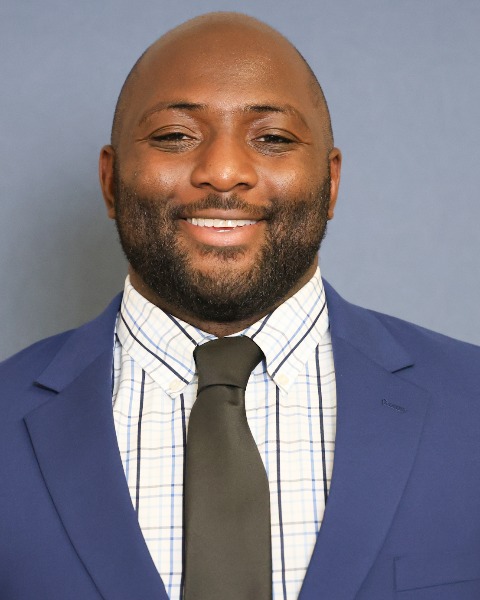Resistance Training/Periodization
(08) QUANTIFICATION OF IN-SEASON EXTERNAL TRAINING LOADS RELATIVE TO COMPETITIVE LOAD IN COLLEGIATE AMERICAN FOOTBALL

Quincy R. Johnson, CSCS*D, NSCA-CPT*D
Assistant Professor, Assistant Director
University of Kansas, Jayhawk Athletic Performance Laboratory
Lawrence, Kansas, United States
Yang Yang, MS, CSCS
Ph.D student
University of Kansas
Lawrence, Kansas, United States- DS
Dayton Sealey
Director of Loper Performance
University of Nebraska Kearney
Kearney, Nebraska, United States - CF
Clay Frels
Graduate Assistant
University of Nebraska Kearney
Kearney, Nebraska, United States - SS
Shane Stock
Head sports performance coach
University of Nebraska Kearney
Kearney, Nebraska, United States - DG
Dalton Gleason
Assistant sports performance coach
University of Nebraska Kearney
kearney, Nebraska, United States - KA
Kazuma Akehi
Associate professor
University of Nebraska Kearney
kearney, Nebraska, United States 
Dimitrije Cabarkapa, PhD, CSCS*D, NSCA-CPT*D, USAW
Associate Director
Jayhawk Athletic Performance Laboratory - University of Kansas
Lawrence, Kansas, United States
Andrew C. Fry, PhD, CSCS*D, FNSCA*E
Professor
University of Kansas
Lawrence, Kansas, United States
Podium Presenter(s)
Author(s)
American football is a dynamic sport which often requires athletes to block, shed blocks, tackle, avoid tackles, sprint, jump, and change directions to succeed. To better support athletes’ health, well-being, development, and performance, sports performance professionals can leverage collaborative sports science research efforts to better support organizational approaches.
Purpose: The purpose of the present study was to quantify and compare practice (match day; MD) and competition (game) external training loads throughout the course of a collegiate American football season.
Methods: Global positioning system (GPS) tracking technology data collected for 34 (Linemen, n = 6; Big skill, n = 9; Skill, n =19) NCAA Division II American football athletes were utilized to address the purpose of this study. External training load variables were measured with data sampled at 10 Hz (Sports Performance Tracking, Ontario, CAN). Practices that occurred 96 (MD-4), 72 (MD-3), and 48 (MD-2) hours prior to a game were classified accordingly. The variables selected for data analyses were training duration (minutes), total distance (yards), hard running distance (yards accumulated at >10.07 miles/hour for longer than one second), hard running efforts (frequency of running instances above the >10.07 miles/hour threshold), yards per minute (otherwise known as work rate), as well as two-dimensional (2D; horizontal forces) and three-dimensional (3D; horizontal and vertical forces) player loads. Descriptive statistics, means and standard deviations were calculated for each variable. Additionally, a one-way analysis of variance was utilized to determine if differences between practice and match days were statistically significant.
Results: When practices were compared to games, statistically significant differences in each external training load measure were observed (p < 0.001). Generally, external training loads declined when training approached game day. Relative to match values (100%), values for training duration (+46 to +2%; MD-4-MD-1), total distance (+56 to +10%), hard running (+57 to +12%), hard running efforts (+58 to +4%), yards per minute (+5 to +2%), 2D-load (+60 to +6%), and 3D-load (+64 to +10%) were all considerably higher than game values.
Conclusions: Although this form of analyses is common within soccer, to the author’s knowledge this is the first analysis to this extent within American football. To add, other reports in soccer (Stevens et al. 2016) have shown vast differences in external load periodization strategies in training prior to games, comparatively. This may be due to schedule congestion, travel, etc. but highlights the need for this type of analysis across competitive sports. PRACTICAL APPLICATION: To enhance the health, well-being, development, and performance of the American football athlete, sports performance professionals may first want to monitor external training loads over an extended period of time (at least one full competitive season). Once the collected data has been shown to be accurate, valid, and reliable, it may be beneficial to compare the demands of practices to game demands to ensure athletes are being adequately and effectively prepared for the demands of the sport.
Acknowledgements: The authors would like to acknowledge the support of this work by the Wu Tsai Human Performance Alliance and the Joe and Clara Tsai Foundation.
Additionally, this project was funded in part by the University of Nebraska at Kearney’s INSpRE Instrumentation Core.
